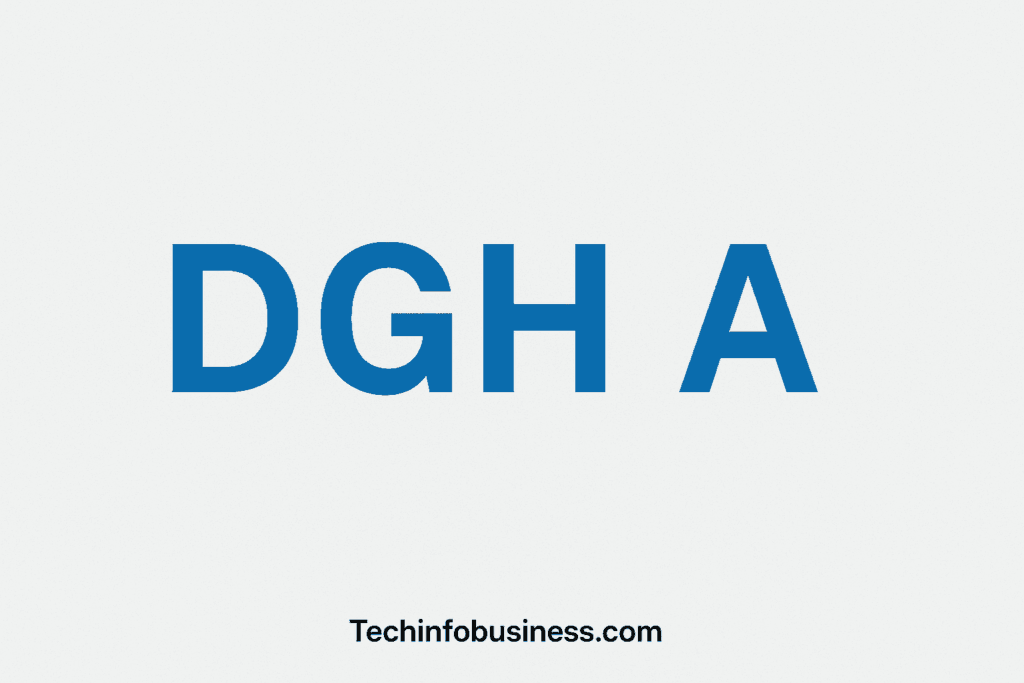Introduction: The New Era of Ocular Biometry
Ophthalmology has experienced dramatic technological advancements over the past few decades. One area seeing continuous innovation is ocular biometry—the precise measurement of anatomical features within the eye. These measurements are crucial for diagnosing various eye conditions and ensuring the success of procedures like cataract surgery.
Enter the DGH A-Scan, a groundbreaking portable ultrasound biometry device designed by DGH Technology. As we step into 2025, this compact tool is playing an increasingly central role in delivering precision and efficiency in eye care. From its accurate axial length measurements to seamless integration with clinical software, the DGH A is truly revolutionizing ocular biometry.
What Is DGH A? An Overview
DGH A, often referring to the DGH 6000 Scanmate A, is a state-of-the-art A-scan ultrasound biometer used by ophthalmologists and optometrists to measure the eye’s axial length, anterior chamber depth, and lens thickness. This data is vital for calculating the correct power of intraocular lenses (IOLs) during cataract surgery.
Unlike older A-scan machines, which were often bulky and required specialized hardware, the DGH A operates via a USB connection to a standard Windows PC or laptop. This not only enhances portability but also allows seamless updates and customization through its proprietary Scanmate software.
Technical Excellence: Key Features of DGH A
The innovation behind the DGH A lies in its smart design and exceptional precision. Here are the standout features that make this device a favorite among eye care professionals in 2025:
1. 10 MHz High-Resolution Transducer
At the heart of the DGH A is a high-frequency 10 MHz transducer, which allows for detailed imaging and measurement. This is critical for axial length determination, where even a 0.1 mm error can result in a significant refractive surprise post-surgery.
2. Dual-Mode Measurement: Contact and Immersion
The DGH A supports both contact and immersion modes. While the contact method is quicker and easier, the immersion technique avoids corneal compression, yielding higher accuracy—a necessity for advanced refractive surgeries.
3. Automatic Data Averaging
Instead of relying on manual selection, the DGH A software automatically detects consistent waveforms and calculates an average while discarding anomalies. This reduces user error and improves reliability.
4. User-Friendly Software Integration
With its Scanmate software, the DGH A offers a user-friendly interface for data visualization, IOL power calculation, and patient record management. Users can easily export reports in PDF or send data directly to electronic health record (EHR) systems.
5. Portable and Efficient
Weighing less than a pound and powered via USB, the DGH A-Scan is ideal for small clinics, large hospitals, and even mobile vision units serving remote areas.
Applications of DGH A in Clinical Practice
Cataract Surgery Planning
One of the primary uses of the DGH A-Scan is to help ophthalmologists plan cataract surgeries. Axial length is the single most influential parameter in IOL power calculation. Using established formulas like SRK/T, Holladay, and Hoffer Q, the DGH A translates precise measurements into optimized surgical outcomes.
Post-Refractive Surgery Measurement
For patients with previous LASIK, PRK, or RK surgeries, corneal properties are often altered, making conventional keratometry less reliable. However, the axial length remains unaffected by these procedures, making the DGH A a trustworthy instrument in these complex cases.
Pediatric and Geriatric Assessment
Children and elderly patients often present challenges in traditional biometry. The quick scan time and smart alignment feedback in the DGH A allow clinicians to obtain reliable readings even from less cooperative patients.
General Ophthalmic Screenings
Even outside the surgical context, the DGH A is instrumental in diagnosing abnormalities such as myopia, hyperopia, or ocular trauma-related structural changes.
How DGH A Compares to Other Biometry Tools
While optical biometers like the IOLMaster or Lenstar dominate high-end markets, they are often expensive, require clean corneas, and struggle with dense cataracts. Here’s how DGH A holds its ground:
| Feature | DGH A | Optical Biometers |
|---|---|---|
| Works with Dense Cataracts | ✔️ Yes | ❌ No |
| Portability | ✔️ High | ❌ Low |
| Cost-Effective | ✔️ Yes | ❌ No |
| Works in All Lighting | ✔️ Yes | ❌ No |
| Requires Direct Line of Sight | ❌ No | ✔️ Yes |
Thus, the DGH A proves particularly valuable in rural clinics, operating rooms, and cases involving media opacities like mature cataracts.
Advantages of Using DGH A in 2025
Enhanced Patient Outcomes
More accurate axial length measurements directly correlate with better post-surgical vision, reducing the need for corrective eyewear or follow-up surgeries.
Time Efficiency
With fast acquisition and intelligent software averaging, clinicians can see more patients in less time without compromising on quality.
Adaptability to Modern Practice
EMR integration, PDF report generation, and cloud compatibility allow eye care providers to streamline documentation and referrals.
Improved Accessibility
Its portability and ease of use mean that even non-urban or traveling eye clinics can deliver high-quality diagnostic services.
Challenges and Considerations
While the DGH A has numerous benefits, it’s important to acknowledge a few limitations:
- Training Required: Immersion biometry demands skill, and improper technique can still result in errors.
- Dependency on Windows OS: The device is limited to Windows PCs, which may pose a constraint for macOS users.
- Manual Lens Constants: Unlike premium optical devices, some newer generation lens constants may require manual entry and verification.
Nonetheless, these are minor trade-offs compared to the advantages it offers, especially in terms of accuracy and versatility.
Case Studies: DGH A in Real-World Settings
Case 1: Rural Cataract Camps
In a mobile eye surgery camp in India, ophthalmologists used the DGH A-Scan to screen and prepare over 200 patients in a week. Its lightweight design and quick measurement capabilities allowed surgeons to plan IOLs with high success rates.
Case 2: Pediatric Eye Clinic
In a children’s hospital in the U.S., the DGH A’s audible alignment feedback and fast acquisition enabled technicians to gather biometric data from restless toddlers, where optical biometry had failed.
Case 3: Post-LASIK Complications
A patient with a history of LASIK presented with cataracts. Optical biometry gave unreliable results due to corneal irregularities. The DGH A, however, provided repeatable axial lengths, ensuring accurate IOL calculation.
The Future of DGH A and Ocular Biometry
As artificial intelligence and machine learning enter the diagnostic arena, future versions of the DGH A are expected to integrate smarter waveform recognition, cloud-based IOL formula optimization, and even remote collaboration features.
Moreover, its role in tele-ophthalmology may grow significantly, enabling real-time data sharing with surgeons across continents.
Read More: What Is Kalibraatio? Understanding the Importance of Calibration in Modern Technology
Conclusion: Why DGH A Is the Gold Standard in 2025
The DGH A-Scan is not just a measurement tool—it’s a clinical ally. Its combination of portability, accuracy, user-friendly software, and affordability makes it indispensable in modern eye care. As biometry becomes even more critical in delivering customized visual outcomes, the DGH A is well-positioned to lead the way.
Whether you’re a solo practitioner, part of a surgical team, or running a global vision initiative, DGH A empowers you to provide accurate, efficient, and impactful care. In the world of ocular biometry, it truly is a revolution.



